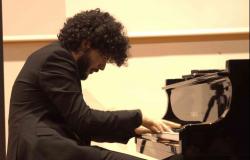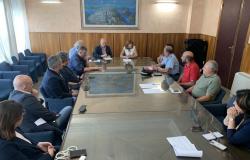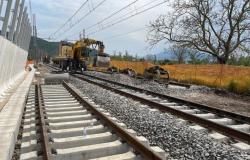Grosseto. Given the interest aroused and the high number of visitors, the exhibition “So that you were free. Anti-fascism, war and resistance in Maremma” will remain on display until July 5th in the Grosseto Province building (opening hours: Monday to Friday from 9.30am to 12.30pm; Tuesday and Thursday from 3.30pm to 5.30pm).
The exhibition
The exhibition, set up on the occasion of80th anniversary of the liberation of the Maremma capitalwas curated by Isgrec, in collaboration with the Province of Grosseto and the Tuscany Region, and tells, through documents and images, the events that led the Maremma to the liberation from Nazi-fascism and the first phases of democratic reconstruction, starting from the existing link between long-lasting anti-fascism and the formation of partisan gangs in the area.
The Maremma, in fact, has its anti-fascist martyrs even before we can talk about the Resistance, names that recall the breath, not only Italian, but European of that struggle for freedom from Nazi-fascist oppression and to which the initial panel of the chronological path that the exhibition follows until 1945. The long incubation of the Resistance, in fact, cannot be ignored when we look at the subsequent 1940s and the emergence of a deep rift between the majority of the population and the regime, due to the terrible impact of the total war wanted by fascism on the civilian populations, in particular due to the bombings which are also explored in detail in the panels.
This detachment between fascism and the population is the crucial passage for understanding the adhesion of the Maremma people to the last months of the armed struggle, those starting since 8 September 1943 when the first Liberation Committee was born in Grosseto, which had given itself the task of coordinating the first partisan bands from the entire province that were forming, with the decisive contribution of elements coming from the dissolved Royal Army.
The provincial nature of the exhibition focuses attention on the territorial dynamics of the birth of the groups, because the Grosseto area is an area characterized by the presence of gangs in areas peripheral to the capital. Just as it takes stock of the different phases of the armed struggle so as not to forget the first early actions of the Resistance in the Grosseto area, early also compared to the national and regional framework. Initial actions that were slowed down by the harsh winter of 1943, only to resume massively once the spring of 1944 arrived.
The panels detail the different phases of those months characterized by the phenomenon of draft evasion, round-ups, like Frassine and Maiano Lavacchio, and then from the intensification of actions as the front approaches; This brings us to June 1944, to the German retreat, also marked by the terrible massacres that struck the Maremma, until the days of liberation, followed along the various lines of advance by the Allied troops.
Finally, the last panels also narrate the first phases of the start of the democratic government of the territory by the men of the Provincial Liberation Committee, finally concluding with a focus on the memory of the Resistance, which also aims to be a tribute to the many fallen soldiers who gave life for the fight against Nazi-fascism.





